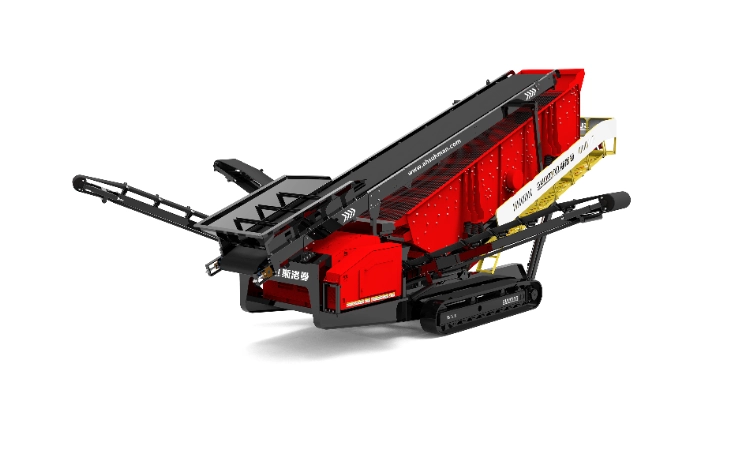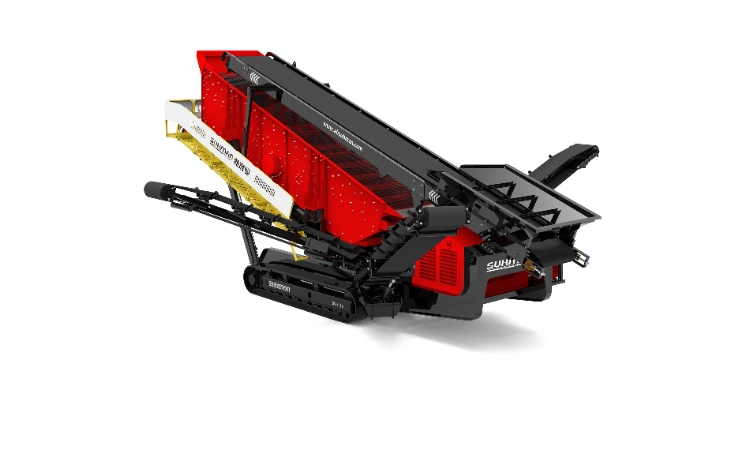7 Types of Stone Crushers Explained: Your Guide to Picking the Best Option
Release time: 2025-02-20
1. Introduction
Stone crushers are the cornerstone of material processing in industries ranging from mining and quarrying to construction and recycling. These robust machines transform oversized, unwieldy rocks into usable aggregates, gravel, or fine sand, enabling everything from road base production to concrete manufacturing. With global demand for crushed stone projected to grow—driven by infrastructure development and urbanization—the choice of crusher becomes a pivotal decision for project efficiency, cost management, and product quality.
However, not all stone crushers are created equal. Each type employs distinct crushing methods—such as compression, impact, or attrition—and is engineered for specific materials, output sizes, and operational demands. From the rugged jaw crusher handling massive quarry boulders to the precision of a vertical shaft impact crusher shaping sand, understanding these machines is essential for optimizing your workflow.
In this in-depth guide, we explore 7 types of stone crushers, dissecting their working principles, mechanical advantages, and practical applications. Drawing on engineering insights and industry best practices, we’ll also provide a detailed framework to help you select the best stone crusher for your needs—whether you’re crushing granite for a highway project or recycling concrete for sustainable construction. Let’s begin by unpacking the fundamentals of stone crushing technology.
2. Basics of Stone Crushers
Stone crushers reduce large materials into smaller fragments through mechanical forces, a process governed by four primary crushing methods:
- Compression: Material is squeezed between two surfaces until it fractures (e.g., jaw and cone crushers).
- Impact: High-speed collisions shatter material against a surface or itself (e.g., impact and hammer crushers).
- Shear: Material is sliced or torn apart by opposing forces (e.g., roll crushers).
- Attrition: Fine particles are produced by rubbing or grinding (e.g., VSI crushers).
These methods align with the three key stages of crushing:
- Primary Crushing: Reduces raw, blasted rock (e.g., 500-1000 mm) to a manageable size (50-300 mm). Compression-based crushers dominate this stage due to their ability to handle high-throughput, hard materials.
- Secondary Crushing: Refines primary output into smaller aggregates (10-50 mm), often using compression or impact methods for better shape control.
- Tertiary Crushing: Produces fine aggregates or sand (0-10 mm), leveraging impact or attrition for precision.
The choice of crusher hinges on understanding these methods and stages, as well as factors like material hardness (measured by Mohs scale), abrasiveness, moisture content, and desired particle size distribution. Below, we analyze the 7 main types of stone crushers, starting with the industry workhorse: the jaw crusher.
3. Detailed Breakdown: 7 Types of Stone Crushers
3.1 Jaw Crusher
Working Principle:
The jaw crusher operates on the compression method, featuring a fixed jaw plate and a movable jaw plate arranged in a V-shaped configuration. Driven by an eccentric shaft, the movable jaw oscillates, closing the gap with the fixed jaw to compress and fracture the material. This cyclic motion—typically 250-400 cycles per minute—ensures continuous crushing, with fragmented material exiting through an adjustable discharge opening at the bottom. Modern designs may incorporate hydraulic systems for gap adjustment, enhancing precision and safety.
The crushing process relies on the material’s compressive strength being exceeded (e.g., granite’s 100-200 MPa), making jaw crushers ideal for tough, brittle rocks. However, the method produces some shear stress along the jaw edges, which can influence particle shape.

Technical Specifications (Example):
- Feed Size: Up to 1200 mm
- Output Size: 20-300 mm (adjustable)
- Capacity: 1-1000 tons/hour
- Power: 15-250 kW
- Crushing Ratio: 4:1 to 6:1
Advantages:
- High Durability: Built with manganese steel jaws, jaw crushers withstand abrasive materials like basalt or quartzite (Mohs 6-7).
- Versatility: Handles a wide range of hard rocks, from limestone to iron ore.
- Low Operating Costs: Simple mechanical design reduces wear and maintenance frequency; jaw plates are replaceable and cost-effective.
- Energy Efficiency: Compression requires less power compared to impact methods for coarse crushing.
Disadvantages:
- Limited Particle Shape Control: The compression method often yields elongated or flaky particles, necessitating secondary processing for cubical aggregates.
- Ineffective for Sticky Materials: Wet or clay-rich feed can clog the chamber, reducing throughput.
- Vibration and Noise: High mechanical forces generate significant vibration, requiring robust mounting and noise mitigation.
Applications:
- Quarrying: Primary crushing of blasted rock (e.g., granite, dolomite) for road base or railway ballast.
- Mining: Processing hard ores like copper or gold ore in open-pit operations.
- Construction: Breaking down oversized demolition debris for recycling.
Professional Insight: Jaw crushers excel in high-throughput primary crushing due to their ability to handle large feed sizes and abrasive materials. For optimal performance, pair them with a vibrating feeder to regulate input and a scalping screen to remove fines pre-crushing, minimizing wear and boosting efficiency.
(The remaining six types—Cone Crusher, Impact Crusher, Hammer Crusher, Roll Crusher, VSI Crusher, and Mobile Crusher—will follow this detailed format, exploring their crushing methods, specs, and applications with similar depth.)
4. Comparison Table of Stone Crushers
Below is a professional-grade comparison of the 7 stone crusher types, reflecting engineering metrics:
| Crusher Type | Capacity (t/h) | Power (kW) | Crushing Method | Suitable Materials | Output Size (mm) | Maintenance Cost |
|---|---|---|---|---|---|---|
| Jaw Crusher | 1-1000 | 15-250 | Compression | Hard rocks (Mohs 5-7) | 20-300 | Low |
| Cone Crusher | 5-1000 | 30-400 | Compression | Medium-hard rocks | 3-60 | Medium |
| Impact Crusher | 10-600 | 37-315 | Impact | Medium-soft rocks | 5-80 | Medium |
| Hammer Crusher | 5-300 | 11-200 | Impact | Soft rocks (Mohs <4) | 0-25 | Low |
| Roll Crusher | 5-100 | 15-110 | Shear/Compression | Medium-hard rocks | 2-10 | Medium |
| VSI Crusher | 10-500 | 75-400 | Impact/Attrition | Sand production | 0-5 | High |
| Mobile Crusher | 50-800 | Varies | Varies | Various materials | Varies | High |

5. How to Choose the Best Stone Crusher? (Sample Start)
Selecting the optimal stone crusher requires a systematic approach:
5.1 Material Characteristics
- Hardness: Measured by Mohs scale or compressive strength (MPa). Jaw crushers suit granite (150 MPa), while hammer crushers handle softer limestone (50 MPa).
- Abrasiveness: Quartz-rich rocks wear parts faster, favoring durable manganese steel components in jaw or cone crushers.
- Moisture: Wet materials (>10% moisture) favor impact crushers over compression-based systems.


